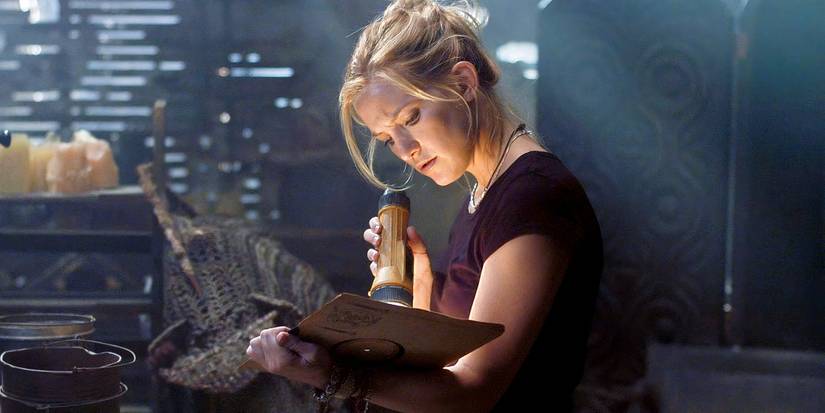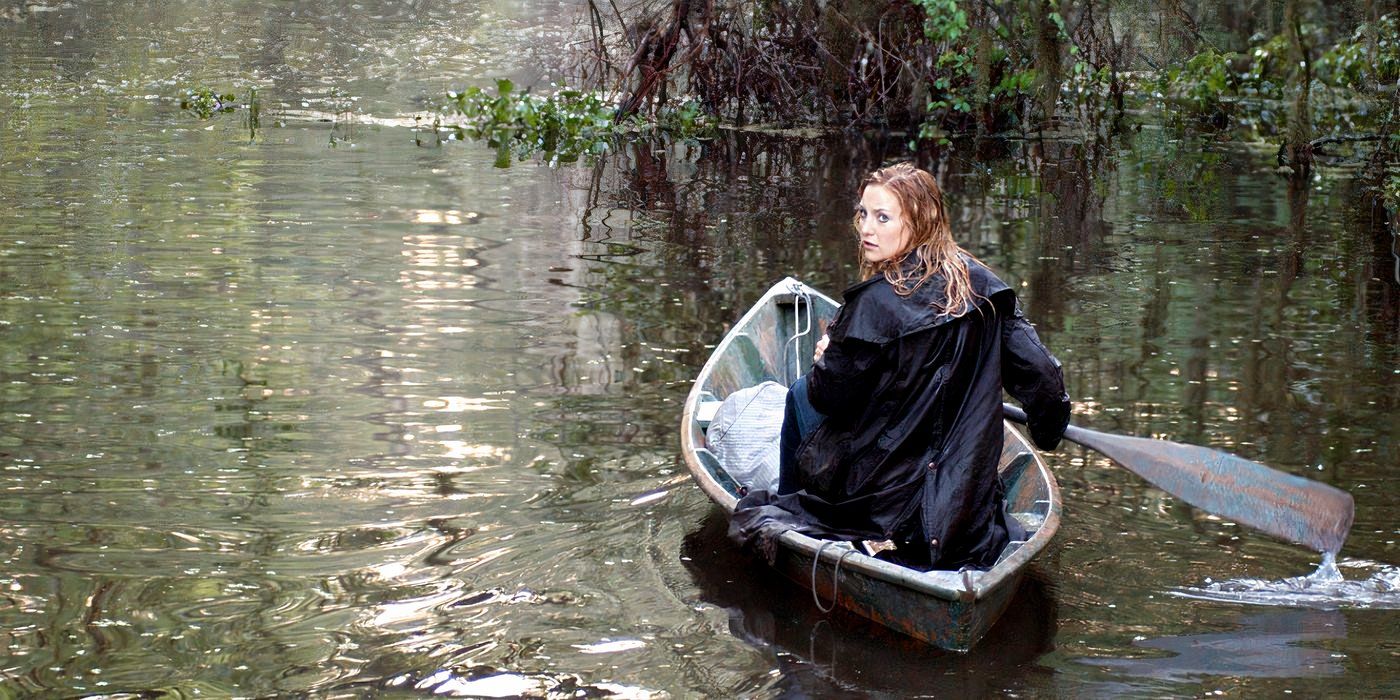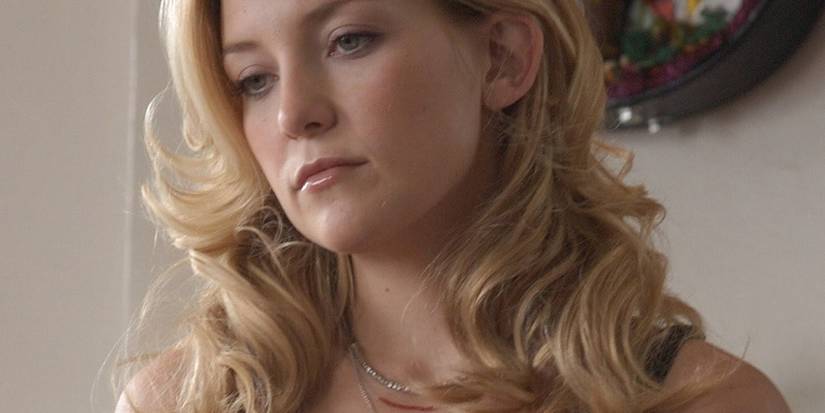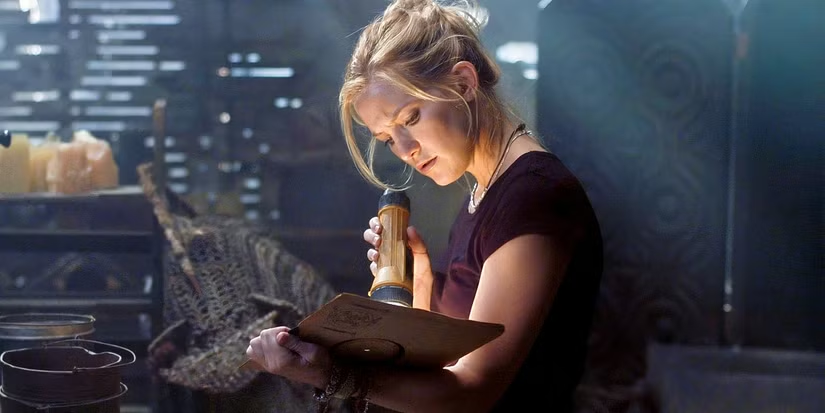
There are countless avenues a horror film can take to destabilize its audience. Some may rely on gore and jump scares, while others take the slower, psychological route, and the 2005s. The skeleton key is one of the latter. Released at a time when much of the horror landscape was dominated by films featuring graphic imagery and extreme situations, such as Saw And Hostel, The skeleton key stood out as an outlier. It wasn’t gory or over-the-top in terms of violence, choosing to build the growing fear through tension and mystery. This type of route can be more difficult to complete, but when done correctly the impact lingers on the viewer. Many horror films of the era played their hands early, but The skeleton key asked for patience with a promise to deliver by the end of the film.
From the first moments, viewers are aware of the elements of mystery at play in the story. The film wastes no time letting fans know something is wrong, even if audiences can’t put their finger on it yet. The skeleton key stands out not only by trying to terrify, but also by inviting the viewer to slowly discover the truth. The underlying mystery helps keep the audience engaged throughout the story and scares them along the way. Tying horror into a mystery allows the film to build organic tension with each revelation. Every little detail feels meaningful and makes the audience feel like an active participant in the story. The skeleton key is built with equal parts fear and curiosity, which is what makes the shocking ending so harsh. Despite initial mixed reviews, The skeleton key deserves the attention of horror fans.
The Skeleton Key mixes mystery and horror
The skeleton key begins by introducing the audience to the film’s main protagonist, Caroline Ellis, played by Kate Hudson. Caroline is a hospice nurse who is distraught at her current job at a New Orleans hospital after the death of a patient she was close to. After the patient dies and no one claims her belongings, she decides to pack her bags and take a job she finds in the local newspaper as a home health aide in a remote Louisiana mansion. After interviewing the family’s lawyer, Luke, she gets the job and becomes Ben Devereaux’s caretaker during his final days. Caroline is reluctantly welcomed into her role by Ben’s wife Violet, played by the late Gena Rowlands. Violet seems reluctant to welcome others into her home, but also admits that she needs help. Caroline learns that the last home nurse quit, but Luke ignores her curiosity as to why.
As Caroline begins to work closely with Ben, who is supposedly paralyzed, she notices that sometimes he is more physically capable than expected. At first The skeleton keyBen grabs Caroline’s wrist, and his grip hurts. The fact that he’s able to move bothers her as much as the strength of his grip, and she begins to wonder about the extent of his condition. As Caroline becomes suspicious, Violet puts Ben to sleep at every turn. She carefully monitors Caroline’s interactions with Ben and quickly intervenes whenever he demonstrates cognitive abilities. She carefully monitors his medications and makes sure he is sedated at all times. One night, Caroline is awakened by a noise and discovers that Ben has managed to get out of bed and onto the roof.
Another clue that leads her to believe that all is not as it seems in the house is when she changes Ben’s sheets and notices the words “Help me” written in dirt on the sheets. Caroline begins to express her concerns about the situation to Luke, but he dismisses and downplays her claims. The mansion itself hints at part of the underlying mystery. Caroline notices that all the mirrors in the house have been removed and stored in the attic. Caroline uses The skeleton key provided to her by Violet to unlock a hidden room in the attic, where she discovers Hoodoo artifacts and an old vinyl record called “Conjure of Sacrifice”, which recites a Hoodoo ritual from soul swapping. All these clues provided to Caroline by the house and by Ben’s actions lead her to question Violet about the history of the house and the nature of Ben’s misfortune.
Violet gives in and tells Caroline that she thinks Ben has been cursed by ghosts and begins to tell her the disturbing history of the house. Violet tells him about the previous owners and their two servants, Mama Cecile and Papa Justify, two hoodoo practitioners. The summary of the story says that one evening, during a house party, the owners’ children disappear and everyone is looking for them in the house. They find the children in the attic participating in a hoodoo ritual with Cécile and Justify. The party turns into an angry mob, believing that Justify and Cécile were harming the children. Cécile and Justify are killed in the front yard, and Violet tells Caroline that she believes their spirits are haunting the house and that they are the ones who cursed Ben. Although parts of the story are true, Violet uses it to manipulate Caroline into trusting him and reinforcing his belief in hoodoo.
Skeleton Key uses Hoodoo for its twist ending
There have been a few ritual horror films that focus on voodoo and hoodoo practices, such as Wes Craven’s. The Serpent and the Rainbow, but The skeleton key stands out by integrating these traditions directly into the horror structure that almost turns it into a mystery film in its own right. The point of the entire plot of the film is to slowly force Caroline to believe in hoodoo, because the rituals only work if an individual believes in them. The marshy setting and the ritual practices put in place The skeleton key firmly in the Southern Gothic horror subgenre. Violet isn’t necessarily trying to scare Caroline; she wants to shatter his worldview so that she can implement her true plans. Caroline begins the film as a total skeptic, and every action and information Violet gives her serves to change that.
Violette gives him The skeleton key to arouse her curiosity and encourage her to explore this house and find clues herself. She feeds Caroline the partially fabricated ghost story to present a possibly plausible supernatural explanation for Ben’s illness, just to open the door for him. When Caroline learns that hoodoo only works if you believe in it, she decides to try a ritual to heal Ben, and he begins to become more reactive as the ritual progresses. Violet stops her efforts before she can complete the spell, but the damage is done and she slowly begins to believe in her potential herself.
The true strength of The skeleton key lies not in the supernatural horror but in the way the twist ending contextualizes the entire story. For most of the film, Violet appears to be a grieving wife trying to care for her ailing husband, and Luke is a caring lawyer trying to help them through a difficult time. Caroline often turns to Luke when she becomes suspicious of Violet, Ben’s illness, and the house, only to be defeated and reassured. The twist ending is hinted at in the story Violet tells Caroline about Papa Justify and Mama Cecile, although she doesn’t tell the whole truth.
The skeleton key little by little proves to Caroline that hoodoo is not a simple superstition, but a powerful force. By the time Caroline arrives at the mansion, Violet is no longer Violet; she is Maman Cécile. Ben, Violet’s husband, is the spirit of lawyer Luke, trapped in the old man’s body. The Luke that Caroline interacted with is actually Papa Justify. Justify and Cécile escaped their deaths by swapping their souls with the children of the original owners. Over the years, as the bodies age, they attract other people to the house and trade their aging bodies for young replacements. Cécile and Justify prepared Caroline so that Cécile could abandon Violet’s body and inhabit Caroline’s.
The skeleton key has one of the best twist ends
However The skeleton key didn’t receive the recognition it deserved upon release, it survived in horror circles. It doesn’t fit into any specific subgenre, which may have hurt it in terms of reviews, but its resistance to classification is one of its strengths. The movie mixes supernatural horror with a psychological thriller set in a Southern Gothic setting. It may have been hampered by the timing of its release, but in retrospect it offered a fresh horror experience at a time when the landscape was dominated by more straightforward genre films. He feels different from his contemporaries and is appreciated for this aspect in hindsight.
For fans wanting to experience something different, The skeleton key offers a lot. The film respects its audience and invites them to participate in the mystery. The tension builds organically as Caroline discovers the secrets of the house and Violet and Luke’s true motivations. By taking a more sober approach to the horror that unfolds, it becomes more immersive. The twist ending is satisfying because it rewards the viewer for their patience and participation. 20 years after its theatrical release, The skeleton key remains an underrated gem of the early 2000s horror landscape.
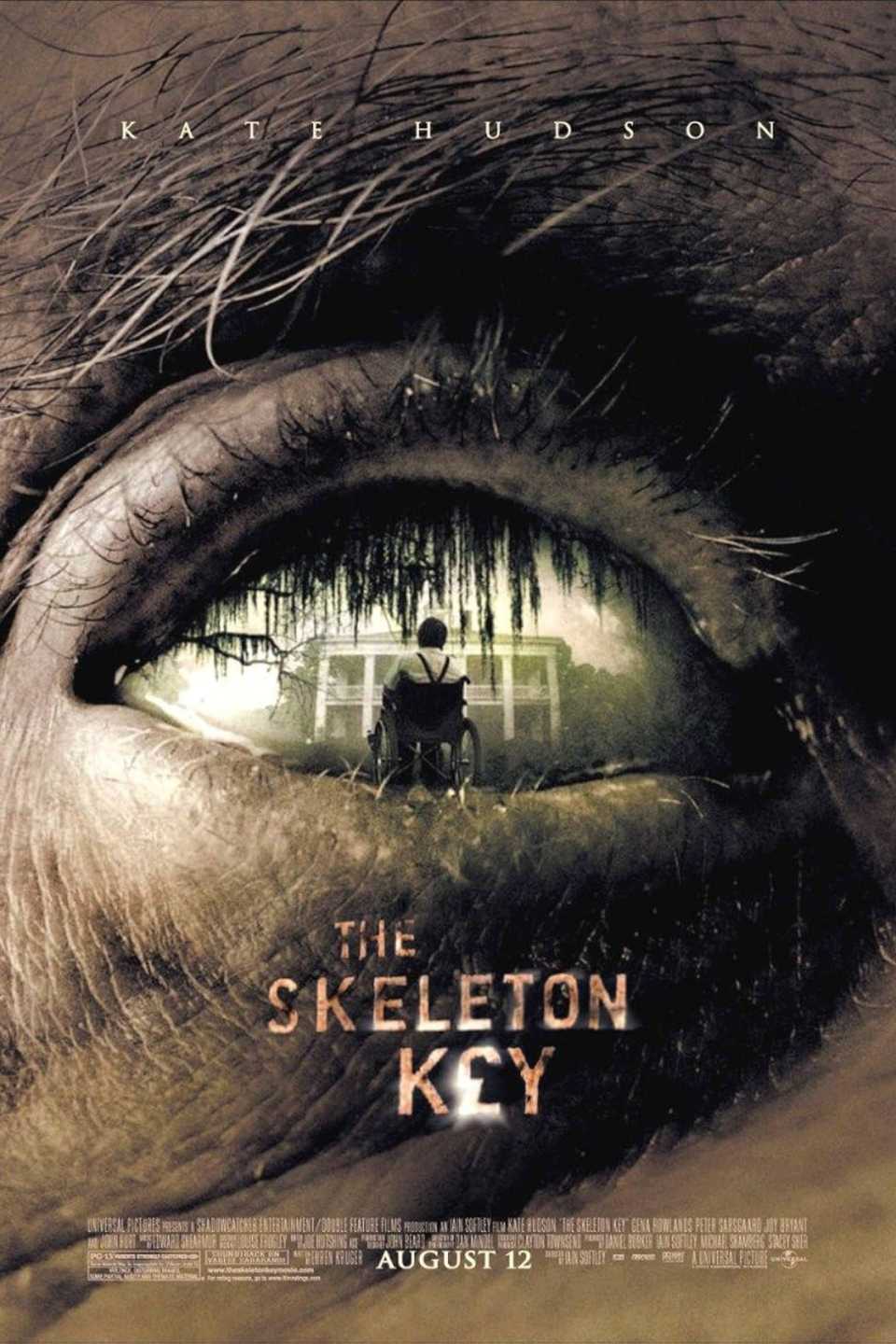
- Release date
-
July 29, 2005
- Runtime
-
104 minutes
- Director
-
Iain Softley
- Writers
-
Honor Kruger
